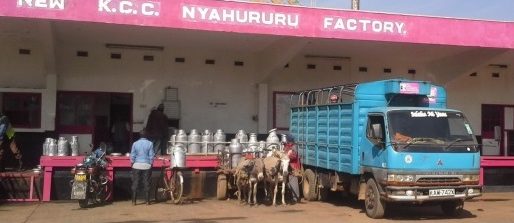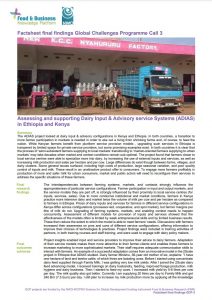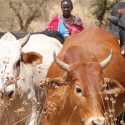GCP-3 Final factsheet: Ethiopia & Kenya, ADIAS

 “The ADIAS project looked at dairy input & advisory configurations in Kenya and Ethiopia. In both countries, a transition to more farmer participation in markets is needed in order to eke out a living from shrinking farms and, of course, to feed the nation. While Kenyan farmers benefit from pluriform service provision models , upgrading such services in Ethiopia is hampered by limited space for private service providers, but some promising examples exist. In both countries it is clear that the process of ‘semi-subsistent farmers supplying to local markets’ transitioning to ‘market-oriented farmers supplying to urban markets’ may take decades when market and context conditions remain sub-optimal. The project found that farmers closer to local service centres were able to specialize more into dairy, by increasing the use of external inputs and services, as well as increasing milk production and sales per hectare and per cow. Large differences do exist though between farms, villages, and dairy clusters. Some general issues surfaced, including high costs of production, large seasonal variation, and poor quality control of inputs and milk. These result in an unattractive product offer to consumers. To engage more farmers profitably in production of more and safer milk for urban consumers, market and public actors will need to reconfigure their services to address the specific situations of these farmers.”
“The ADIAS project looked at dairy input & advisory configurations in Kenya and Ethiopia. In both countries, a transition to more farmer participation in markets is needed in order to eke out a living from shrinking farms and, of course, to feed the nation. While Kenyan farmers benefit from pluriform service provision models , upgrading such services in Ethiopia is hampered by limited space for private service providers, but some promising examples exist. In both countries it is clear that the process of ‘semi-subsistent farmers supplying to local markets’ transitioning to ‘market-oriented farmers supplying to urban markets’ may take decades when market and context conditions remain sub-optimal. The project found that farmers closer to local service centres were able to specialize more into dairy, by increasing the use of external inputs and services, as well as increasing milk production and sales per hectare and per cow. Large differences do exist though between farms, villages, and dairy clusters. Some general issues surfaced, including high costs of production, large seasonal variation, and poor quality control of inputs and milk. These result in an unattractive product offer to consumers. To engage more farmers profitably in production of more and safer milk for urban consumers, market and public actors will need to reconfigure their services to address the specific situations of these farmers.”






